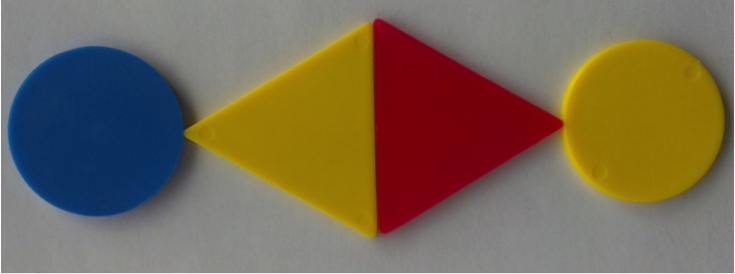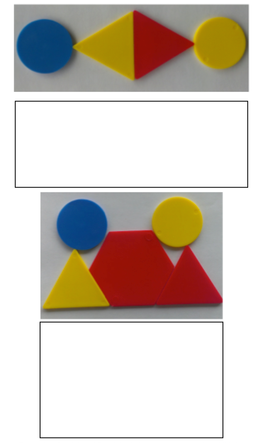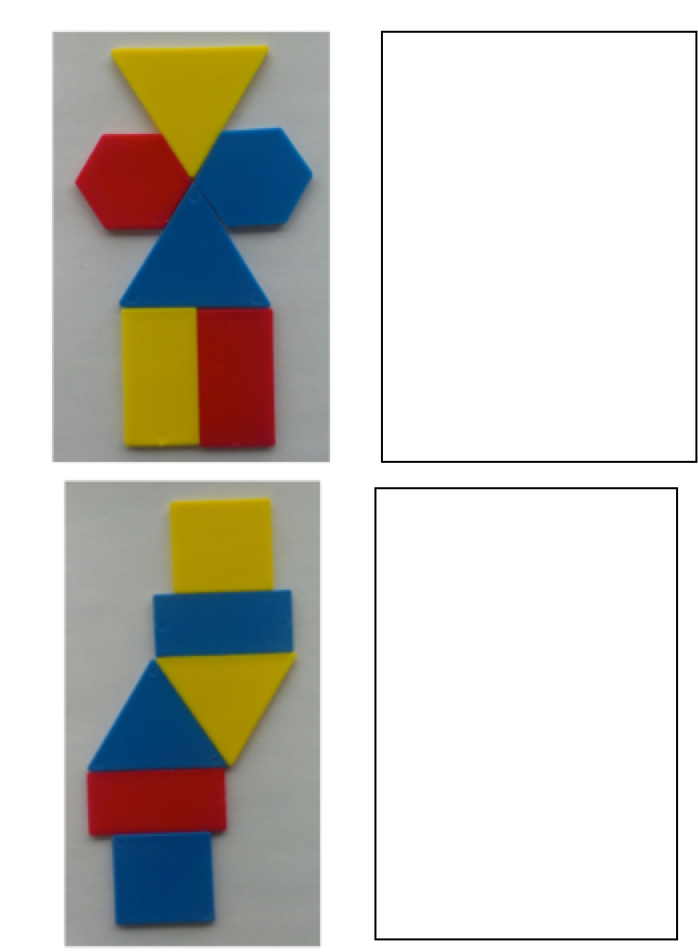CVI in Practice: Teaching Visual-Spatial Skills Using Attribute Blocks
Submitted by Roxana Cziker on Oct 24, 2016

This is the second part of a 5-part resource that was especially designed by a Low Vision Therapist for children with Cerebral Visual Impairment (CVI) and particularly for children with difficulties in visual spatial relations, specifically in understanding the composition of spatial configurations and the relationship between the component elements of the configuration and difficulties in writing.
This activity is designed to help students with CVI to develop an understanding of spatial configuration using geometrical shapes.
Materials:
- Attribute blocks (available at many teacher supply stores, such as these)
Procedure:
Stage 1 – Activity with concrete elements
(active stage of learning following the learning theory of Jerome Bruner)
- First use concrete geometrical shapes to make different configurations, as in the picture.
- Use only two or three geometrical shapes in the beginning and arrange them into a spatial configuration, as in the example provided in the picture.
- Provide consistent practice with spatial concepts such as left, right, up, down, beside, below, above in order to make aware the child of the practical use of concepts and the relations which are established between component elements of a spatial configuration.
- Build up the model of geometrical configuration in front of the child, starting with the first shape and then adding all the other geometrical shapes. Verbalize the way you are doing the spatial configuration (which will be the first shape, the second, which spatial relation will be created among elements and so on).
- Then ask the child to follow your model and place all the elements in the same order and position. If the child makes a wrong configuration, start over and explain the relation among the elements.
- Use then more geometrical shapes as in the examples provided in the pictures on this page.


| Example of activity for spatial relations: present the model on the left side and ask the child to create the same configuration with concrete geometrical shapes on the right side. |
Stage 2 – Activity with images
(iconic stage of learning)
- Present to the child the spatial configuration with geometrical shapes in a picture.
- Analyze, together with the child, the spatial configuration in picture. Note together the position of each element in the configuration and the relation which is established among elements, e.g. “First is the yellow triangle, at the top. Below there is a red rectangle. To the left side of the rectangle we have a blue triangle which is attached to the rectangle,” etc.
- Then ask the child to make the same spatial configuration, following the model in the picture, but with concrete geometrical shapes. Ask the child to place his/her model beside the picture in order to have a clear view of the model and to establish the relations created among the component elements of the spatial configuration.


Figure 4: Example of activity of spatial relations -- present to the child the model of the image facing up and ask her to create the same thing facing down.

Figure 5: Example of activity of spatial relations -- present to the child the model of the image on the left side and ask her to make the same configuration, with concrete geometrical shapes on the right side.

Figure 6: Example of activity of spatial relations -- present the child with the model on the left and ask her to create the same thing on the right side, using concrete geometric shapes.

